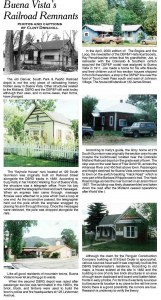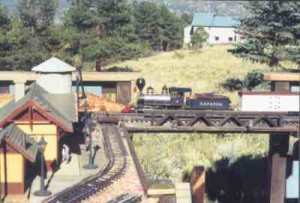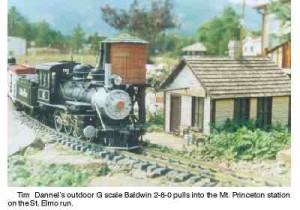Brief by Central Staff
Census – January 2004 – Colorado Central Magazine
If you visit Como or Guffey, let alone the often-lonely roads to those settlements, you wouldn’t think you were anywhere near a metropolitan area. But the federal government has recently decided that they’re part of a Metropolitan Statistical Area, just like Boulder or Lakewood.
While it’s tempting to blame federal bureaucrats for this strange idea of what’s metropolitan, our county boundaries bear some of the responsibility.
Census data from 2000 showed that more than 25% of the workforce in Park County commutes to a core city for employment. Under the guidelines of the federal Office of Management and Budget, that makes Park County part of a metropolitan area. Other Colorado counties that fell under the November decision were Teller, Clear Creek, Elbert, and Gilpin.
Some of Park County, like the stretch along U.S. 285 from Bailey on east, certainly qualifies as part of the metro area. Como and Guffey, and Hartsel and Lake George, are about as rural as places get. But the Census Bureau doesn’t divide counties for these definitions, so the whole county is now part of the Denver Metropolitan Standard Statistical Area.
The new definition may not be a benefit, according to a story in the Nov. 24 edition of the Denver Post, where local officials pointed out that it will be quite difficult to get federal grants for things like “rural ambulance service” or “rural communications improvements” when their counties are classified as part of a metro area, which presumably has such infrastructure.
In Washington, D.C., it might be hard to realize that some Colorado counties are bigger than some whole states back east, and that an isolated rural settlement might sit 60 miles from a metro commuter zone — but still be in the same county.
To move on, the Census Bureau has also come up with a new term for smaller cities that serve as regional hubs: they’re “micropolitans.”
A micropolitan needs a population cluster of at least 10,000 people. Nationally, there are 565 of them, and seven are in Colorado: Cañon City, Durango, Edwards (in Eagle County near Vail), Fort Morgan, Montrose, Silverthorne (Summit County), and Sterling.
All these Colorado “micropolitan areas,” except one, extend only to the relevant county. The exception is Edwards, which includes both Eagle and Lake counties, since so many Leadvillites commute to work in the Vail area of Eagle County. And why Edwards instead of Vail, Eagle, or Avon? It’s got the county’s highest population concentration.
Colorado’s micropolitans are a diverse lot. Most are based on tourism, but Fort Morgan runs on beef-packing, and Sterling has agriculture, oil, and a prison. One thing they have in common, except for Silverthorne: Super Wal-Marts.
One logical contender for micropolitan status, Glenwood Springs, missed the list because its population was 500 short of the requisite 10,000 — a number the Census Bureau concedes is arbitrary.
Even so, the new category makes sense. It describes our population and geography better than using “metropolitan” and “rural,” with nothing in between.



